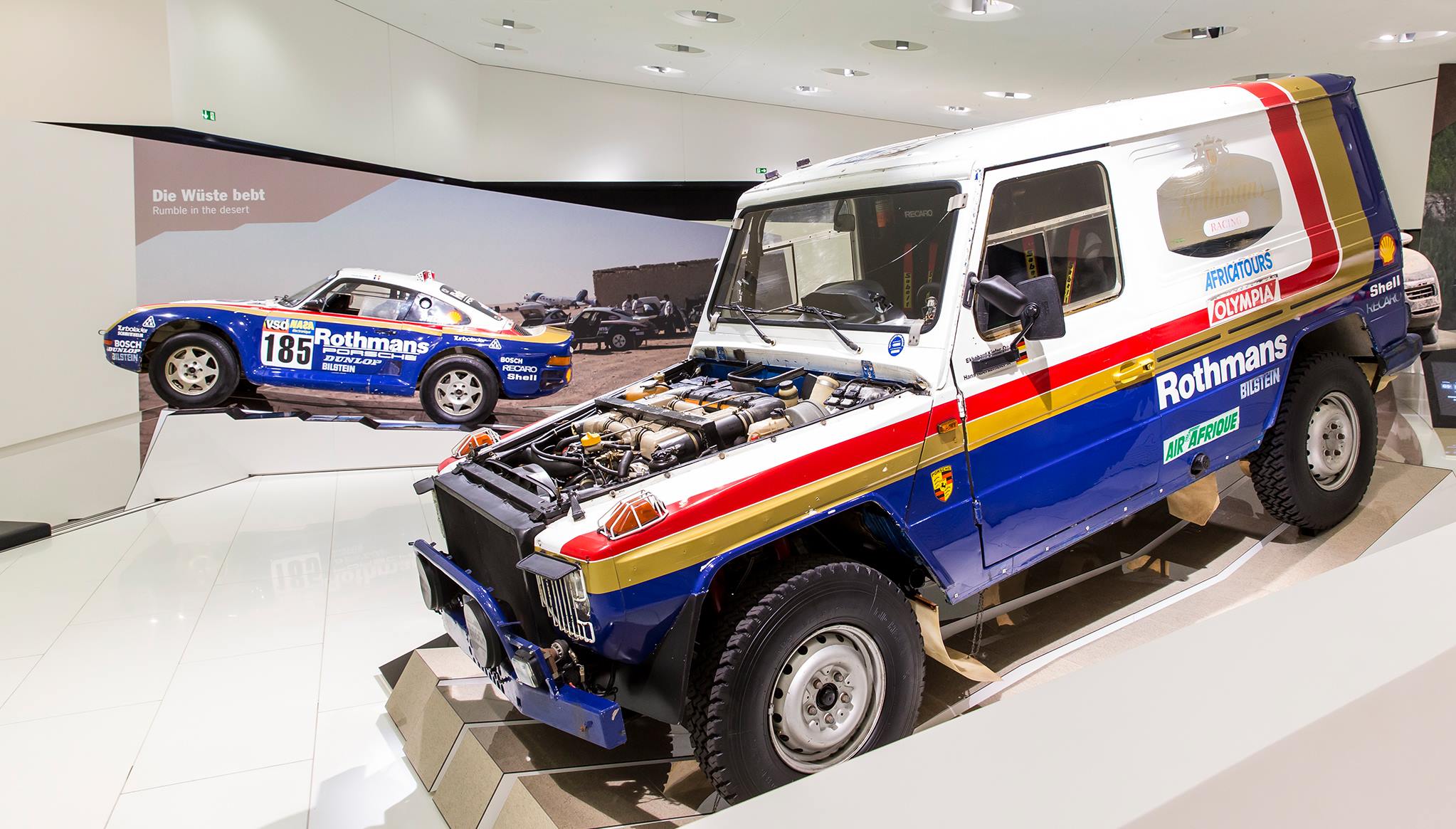
Source: Porsche on Facebook
Last July, Porsche hauled a few of their large-and-in-charge off-roaders into the museum for a special exhibit on the history of Porsche’s jacked-up four-wheel-drivers. Among them was a Mercedes G-Wagen support vehicle for the company’s Dakar efforts in the mid-1980s. I’d seen this car in photographs of the display before, but I didn’t know the secret it held underneath its hood until just a few days ago when Leh Keen posted about it on Instagram (post linked below). The strongest Gelandewagen from 1985 would have had a 2.8-liter inline-six cylinder with just 156 horsepower on tap. In order to keep up with Porsche’s sand-dominating supercar, the team installed a 1986 European 928S 4.7-liter V8, which almost exactly doubled that horsepower number, rated from the factory at 310 horses. It is because of this swap that the Mercedes became known as the “Porsche im Schafspelz” or “Porsche in sheep’s clothing“.
While the Por-cedes didn’t actually finish the rally from Paris to Dakar (read-on and you’ll learn it did take 2nd in another rally), it’s still an interesting part of Porsche’s motorsport history. It’s also a reminder of the times when Porsche would take any steps necessary to be seen as the wild and crazy sports car company on the international stage. Their Dakar victory was somewhat out of character for a boutique sports car manufacturer of the time, but Porsche never subscribed to anyone’s vision of what they should be. The motorsport division was a quirky and eccentric group that could take on much bigger companies and not let the challenge scare them away. Motorsport sculpted their products, and they sold a wide array and strange amalgam of sports cars.
For years, this car was hidden away in Porsche’s underground bunker of history, and there is very little information available about it anywhere. We hunted through dozens of Porsche reference books, websites, and press materials to find as much information as we could about this Porsche/Mercedes hybrid. Of course, the first place we looked was the only place that really even mentioned the truck. When all else fails, always go to Karl Ludvigsen’s Excellence Was Expected. It’s an incredible tome of Porsche knowledge, and always has at least a little bit about what you’re looking for in the company’s history.
From Excellence Was Expected, pgs. 1024-1025:
“In ’85 [team engineer Roland] Kussmaul backed up the team with a Mercedes-Benz G-Wagen, but was frustrated by its slow pace. He remedied this for 1986 by installing a 928S V8 in the four-wheel-drive G-Wagen. In fact, this chase car and two of the new rally cars were ready in time for a tryout in Egypt’s Rally of the Pharaohs in October of 1985. There, one [Porsche 959] was driven by Qatar driver Saaed al Hajri, who won the event with ease. Jacky Ickx’s sister car caught fire only a few miles from the Cairo start and burned to an unrecognizable hulk. Kussmaul, who entered the Porsche-powered G-Wagen in the rally, placed second.
This G-Wagen was mustered for the 1986 Paris-Dakar, but gave up early in the running, as did another Porsche support vehicle. Entered in one of the 959s, Kussmaul piled more and more spares aboard his car. Early in the ’86 event, Jacky Ickx was slowed by radiator repairs that dropped him behind René Metge, who assumed the lead. In what was considered the toughest Paris-Dakar yet, only 67 of 488 starters survived. Metge was the winner in 41 and a half hours, and Ickx was second, one-and-three-quarters hours behind. Kussmaul was sixth.”
And here is a nice YouTube walk-around video of the truck on display at the museum. If you get a chance to get over to the museum to see it, we highly recommend you do so.
